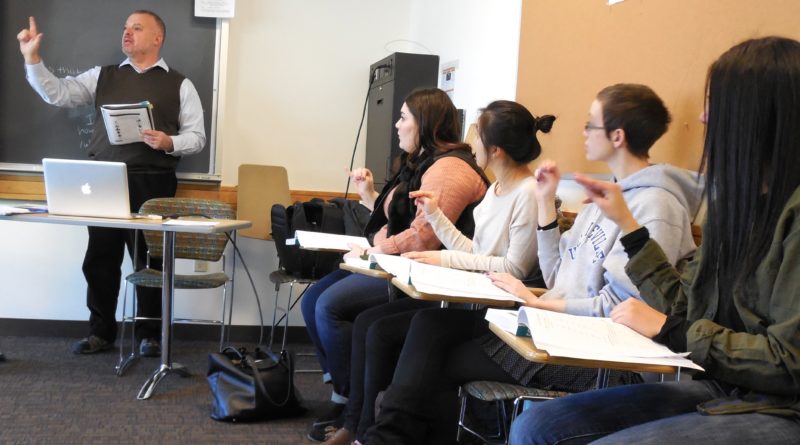OPINION: Giving a voice to the voiceless
Why American Sign Language should be a language course option in all schools. Photo courtesy of Flickr.
Katie McPeek | Contributing Writer
There is no doubt that every day we are seeing more and more of the deaf community being represented in society. Whether you are watching popular award-winning movies like CODA or A Quiet Place, or maybe you are a fan of the popular television show Dancing with the Stars, we are seeing the deaf community being shown in ways unlike they have ever been in the past.
While normally I would think this is great, and believe me, I do, after participating in my Foundations of Disability Studies course here at UD, it now leads my mind to thinking about ways in which we are also lacking in terms of disability and how much more needs to be changed. Specifically, our means of communication in our society with those who are disabled.
According to the Communication Service of the Deaf, there are around one million people who use American Sign Language as their main way of communication, whether that is due to deafness, hard of hearing, or other health conditions that impact oral skills like autism and aphasia, to name a few. ASL has become a language for the non-verbal to be able to communicate and interact with the individuals around them.
Being that our voices are what nondisabled individuals use every day to interact with one another, ASL provides individuals with the opportunity of being able to take part in that crucial aspect of life, to express themselves in a way that works for them. Communication is such a powerful tool in our world and however individuals are able to do so should be valued.
Being that ASL is a beneficial language for such a large number of individuals in the United States and Canada, it comes as an absolute shock that it is not offered as a language learning course in the majority of high schools and universities across the country. This course goes beyond just being beneficial for those in and around the deaf community, in fact arguments can be made for its necessity in numerous occupations, if not every single one.
Looking beyond just the health professions, where it would most certainly be valuable for them to be able to communicate with a wider range of patients and give the best possible care, the language’s value is present for other occupations such as early education teachers, first responders, governmental or court personnel and even retail jobs.
In other words, a person who uses ASL as their way of communicating, for whatever reason it may be, should never have to go somewhere or find themself in a situation where they are unable to be understood. It is difficult for me to put myself in their shoes and imagine how I would feel not being able to communicate with others, especially in times of emergency. But unfortunately, for those using solely ASL as their means of communication, that is the reality for them.
The growth of education of ASL would eliminate a huge added stress to those who use it and would break down barriers that are present between nondisabled individuals and disabled individuals.
It is argued that this lack of option of ASL as a course may be due to not having enough individuals who are able to teach ASL or better yet enough people who know it well enough to teach it. To counter that point I say, by not offering it, the cycle of individuals who do not learn it will only continue to go on, and the stigmas of the deaf community will be carried with that.
The earlier people begin to learn this language that is very present in our lives around us, the faster we will see society change to be more inclusive for everyone, with or without any disabilities. If this language is provided as an option to take in schools, then it will ultimately begin to become more of the norm.
In this nondisabled world, it is important to start breaking down these barriers. As previously mentioned, I see it happening already, there has been much progress made in representation and recognition of the disabled community. But it is nowhere near enough. Rather than viewing disability, in this case deafness, as a negative, society needs to start embracing individuals for who they are and allow them to live comfortably in a world that was made for them too.
While the teaching of ASL is only a small part in this change, it is a step towards embracing the lives of individuals and how they live, rather than forcing them to conform to a nondisabled world. The teaching of ASL in more schools and universities must start to be implemented as it is important in the inclusion and understanding of the disabled community and would lead to strides of improvement to a society where everyone feels as though they are valued.
In the meantime, I will continue to learn and strive to be an advocate for those in the disabled community, to give a voice to the voiceless, and it is my best hope that after reading this you consider doing the same.
For more opinion pieces, like Flyer News on Facebook and follow us on Twitter (@FlyerNews) and Instagram (@flyernews).

